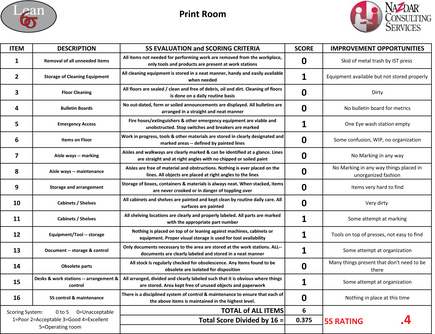I recently had a “full circle” moment with a fellow I had never met before – or so I thought. But it turns out our paths had almost crossed any number of times. This phenomenon probably happens to people in many occupations, but I know from experience that in the graphic trades, it happens all the time.
I recently had a “full circle” moment with a fellow I had never met before – or so I thought. But it turns out our paths had almost crossed any number of times. This phenomenon probably happens to people in many occupations, but I know from experience that in the graphic trades, it happens all the time.
When we “met,” this guy, Ernst Vegt, handed me a mailer and handwritten letter I sent him over 20 years ago, when I was flogging some of the first inkjet film available in Canada. I had forgotten the piece, and looking at the prices made me laugh out loud – here was one instance where costs have dropped by half.
The really strange thing to me was our recent reintroduction. It came through my daughter, Naomi, the book designer. Turns out Ernst, who ran a high-end scanning and separation company down in the Vancouver area, photographed and scanned artwork and photos for many of the books she worked on, and he knew her and her work. When she mentioned growing up on Vancouver Island and her dad being a screen printer, Vegt put two and two together and said, “Aha – Mr. Silkscreen.”
Naomi sent us a mutual note and told me I had to meet Ernst, who had recently moved to our Comox Valley community, far from the big city. So we made contact by email, and he came in to see me last week. This is where the circle starts to get filled in.
Advertisement
Some of you may know I work at a place called Wachiay Studio. It’s part of Wachiay Friendship Centre. The center provides a range of services for urban aboriginal people and their families in our community, from legal, health, and housing assistance to early childhood, preschool, and afterschool programs for kids and parents; dry food and hot lunch programs; elders’ lunches; and more.
We run a social enterprise screen shop that earns money for the center, provides training in graphics, printing, and audio-visual media to native youth, and helps create small screen printing businesses. Although focused on the needs of First Nations, Inuit, and Metis people, it is open to all. It’s a really welcoming place – Wachiay means “welcome” in the Cree language.
As I take Mr. Vegt through the building back to our screen and graphics studio, he laughs. He tells me back in the 1970s, he used to work here! Turns out our building used to house the Comox District Free Press, and had a massive four-color web press that published the local paper and scores of flyers, papers, and other printed material. It was one of the largest employers in the region, and probably the biggest printer on Vancouver Island outside of Victoria. Ernst ran their litho camera, shooting PMTs and resizing type as well as making plates. He did paste-up, stripped film, cut Rubylith, rubbed down Letraset, and all the crazy things graphics people did prior to the arrival of the computer.
He moved away decades ago but stayed in the game, transitioning into digital production. In the back of his mind, he always wanted to return to the Comox Valley, and so a few years ago, he and his wife moved. He isn’t retired, but he is more focused on what he loves. Coast Imaging Arts’ client list includes printing companies, artists, book publishers, galleries, photo labs, photographers, signage companies, and others with excellence in drum scanning, art repro capture, proofing, and G7 qualifications as certified by Idealliance.
I felt a little intimidated showing off our studio – in the wide world of graphics, we are essentially spot-color hacks. But it turns out the lure of the squeegee impresses even the slickest of the slick. Ernst told me he took a workshop in screen printing back in the 1970s and has always wanted to use it as an artistic process to reproduce his own photography. After seeing what could be accomplished, he left our meeting with a handful of inkjet films to try out in his printer and a bunch of our old films he would test for Dmax, and said he would be signing up for an Intro to Screen Printing course in the very near future. I gave him a copy of my book – the one my daughter created while in school that led to her job at a major publisher, which led to her meeting Ernst, and led him to me. Full circle.
I look forward to him coming to print with us, because I know I’m going to learn as much from Ernst as he will from me. Over lunch, we started talking about mutual friends in the industry and the new crop of young designers and makers in our region. We’ve already started planning a graphic workers meetup/barbecue/lawn sports derby. Not only will it be fun, but it will really complete our circle, and help create new ones.
Advertisement
Read more of Andy MacDougall’s "Shop Talk" or check out the rest of Screen Printing‘s June/July 2017 issue.


 Case Studies2 months ago
Case Studies2 months ago
 Art, Ad, or Alchemy2 months ago
Art, Ad, or Alchemy2 months ago
 Andy MacDougall2 months ago
Andy MacDougall2 months ago
 Columns4 weeks ago
Columns4 weeks ago
 Editor's Note3 weeks ago
Editor's Note3 weeks ago
 Marshall Atkinson3 weeks ago
Marshall Atkinson3 weeks ago
 Case Studies4 weeks ago
Case Studies4 weeks ago
 News & Trends2 months ago
News & Trends2 months ago

















